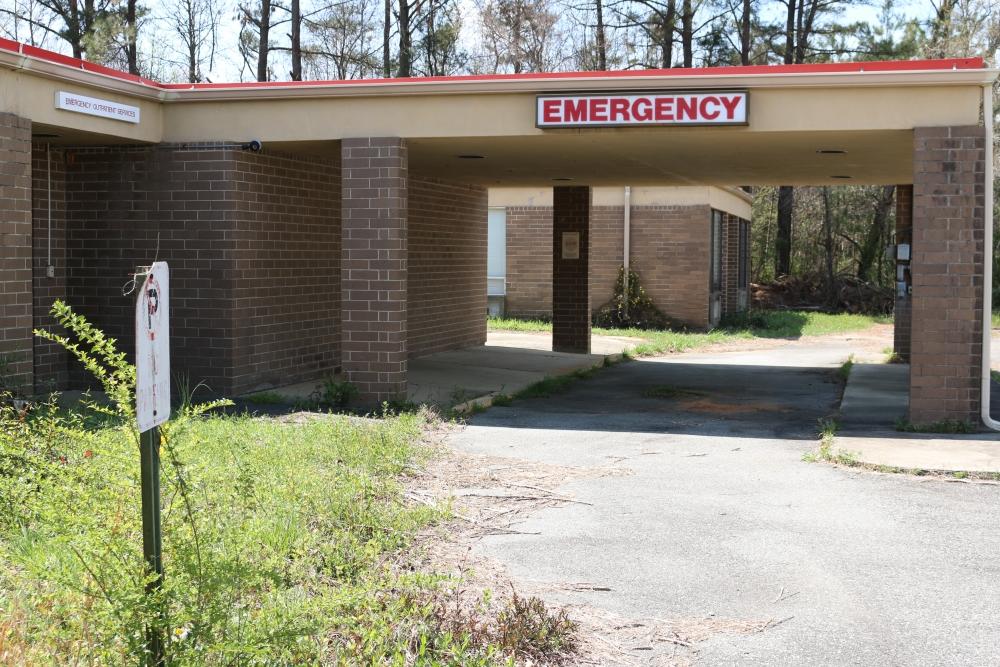
Caption
Office of Rural Health Director Diane Hall said the disparities in health outcomes in rural areas creates a “degree of burden” on public health: a responsibility to focus on existing challenges more than on how many people live there.

The Atlanta-based Centers for Disease Control and Prevention released its new five-year strategic plan for the Office of Rural Health earlier this month. GPB's Sofi Gratas reports.

Office of Rural Health Director Diane Hall said the disparities in health outcomes in rural areas creates a “degree of burden” on public health: a responsibility to focus on existing challenges more than on how many people live there.
Three quarters of the state of Georgia is considered rural, within a population of 50,000 people per county. Nationwide, rural residents make up about 20% of the total population
Yet public health in these areas has been largely understudied and underfunded.
The Atlanta-based Centers for Disease Control and Prevention now hopes to strengthen its rural efforts. It released its new five-year strategic plan for the Office of Rural Health earlier this month. The office was established after the agency received a commitment of congressional funds last year.
The Office of Rural Health’s mission includes putting more focus on research that benefits rural residents and bolstering health care infrastructure, said the office's director, Diane Hall. That means working across CDC programs to help embed an understanding of rural needs.
Compared to urban residents, people who live in rural places are often at greater risk for common preventable diseases and early death, the CDC reports. There’s also a higher reported prevalence of risk factors in rural areas that can cause premature death, including smoking, obesity, and drinking in excess.
Hall said the disparities in health outcomes create a “degree of burden” on public health: a responsibility to resource places that is more focused on existing challenges than on how many people live there.
“It’s a different way of thinking about how to distribute those resources,” Hall said.
With a dedicated office, they can also better explore regional differences.
“Everybody's always interested in how is rural comparing to non-rural areas. And I think that's an important comparison,” Hall said. “But I don't think that the results are often surprising. And I don't think that that finding is very actionable.”
In Georgia, rural health concerns vary by state region, according to data from the Department of Public Health.
For example, last year, in the Northwest Public Health District, some counties saw up to 8% of total emergency department visits by adults related to mental or behavioral health. In the Southwest Public Health District, that percent of visits doesn’t go above around 3% in any county.
Outcomes vary too, and can be deeply rooted in history and longtime disinvestment.
Death from stroke is much more common along the so-called Black Belt, counties in the American South with a high Black population that started when people were enslaved. Meanwhile, in the northern corner of the state — part of the Appalachian region — more people die from chronic liver disease, cirrhosis and suicide, sometimes called "diseases of despair."
Still, these trends don’t show the whole picture.
“It's hard to get that data,” said Dr. Jean Sumner with the Rural Health Innovation Center at Mercer University. She agreed that rural communities can often be misrepresented.
That can come from top-level data collection that does not prioritize meaningful connections with residents or providers, she said.
“I hope that they really take a fresh look at what they've done historically and not try to do it from a 30,000-foot level,” Sumner said about the CDC.
That means collaborating more closely with local physicians, public health workers and pharmacists, Sumner said. One of the top priorities for the new office, according to the plan, is strengthening partnerships “to improve rural health functions” and expanding CDC outreach further into rural communities.
While the CDC’s strategic plan isn’t regionally or state-specific, it is the first step towards eventual work on the ground that will be guided by an action plan, Hall said.
“Congress has been very clear; they wanted CDC to create this office,” Hall said. “Rural Health enjoys bipartisan support in Congress, and I can't think of too many things where you could say that.”
Also coming before the end of the year is an updated method for urban-rural classification from The National Center for Health Statistics, the outpost for health statistics under the CDC.